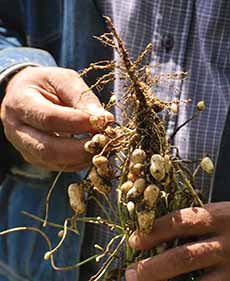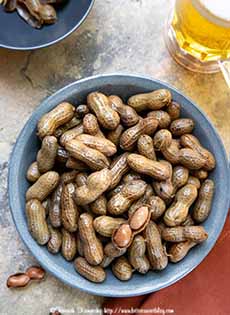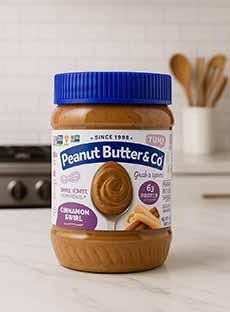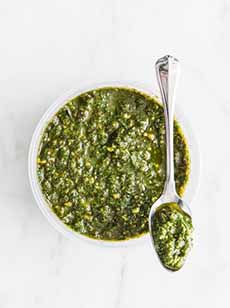|
Truth to tell, we had never heard of boiled peanuts, a Southern specialty. While many Southern specialties—barbecue, chicken and waffles, cornbread, hot sauce, and pecan pie, for example—not to mention Bourbon—boiled peanuts had never crossed our path.
But when Dixie Grace’s wrote to us to try her boiled peanuts—and added that there was a National Boiled Peanuts Day on February 21st—how could we resist?
While we missed National Boiled Peanut Day, we have enough upcoming events Easter, Mother’s Day, Father’s Day, even July 4th, to make gifts of the all-American peanut in a form beyond what most of us eat (i.e., roasted peanuts).
Dixie Grace’s Boiled Peanuts are our Top Pick Of The Week because everyone should know what boiled peanuts are like.
More about them follows, but first:
> The history of boiled peanuts is below.
> So are all the peanut holidays.
> Beyond the peanut: all the nut holidays.
> The history of peanuts.
> Why are peanuts called goobers?
WHAT ARE BOILED PEANUTS?
Simply that: green (raw) peanuts in the shell that are boiled with a bit of salt and lemon, plus other seasonings if you want them spicy or sweet.
A protein-rich snack popular in the South, they deliver layers of flavor with just four simple ingredients: peanuts, salt (Dixie Grace’s uses pink Himalayan salt), water, and lemon.
You end up with a peanuts that are more tender and buttery. They’re vegan, gluten-free, cholesterol-free, non-GMO, and keto-friendly.
Nutritionally, peanuts are a protein powerhouse snack (7g per serving), 18% DV of fiber, gluten free, and cholesterol free, with lots of vitamins and 80+trace minerals. Dixie Grace’s are dairy free, soy free, and non GMO.
Open the bag and you’ll see what looks like most, dark brown peanut shells (photos #1 and #2). Pick one up and they immediately pop open revealing the red-skinned peanuts inside.
This Southern snack is popular fare at weddings, family reunions, tailgates, and other parties.
As you can see in the chart that follows:
Nutritionally, boiled peanuts have fewer calories and fat because they absorb water and some oils leach out. They also have higher antioxidants, particularly resveratrol, which is linked to heart health and anti-inflammatory benefits.
Roasted peanuts are more energy-dense with a richer, nuttier taste, making them a better snack if you’re looking for a quick energy boost.
From a flavor perspective, boiled peanuts are mild, slightly salty, and earthy. If seasoned, they readily absorb flavors well (Cajun, garlic, smoke, whatever). Their texture is soft, moist, and creamy, almost like a bean. The shell is softened from boiling, making them easy to open.
Roasted peanuts, in contrast, are more intense, nutty, and slightly sweet due to the caramelization that happens during roasting. Their texture is dray and crunchy.

[10] Boiled vs. roasted Peanuts: nutritional differences (image created by ChatGPT).
BEYOND SNACKING: HOW TO ENJOY BOILED PEANUTS
Just as with regular peanuts, boiled peanuts are surprisingly versatile in the kitchen. Remember that peanuts are legumes, belonging to the same botanical family (Fabaceae) as beans, lentils, and peas.
Since boiled peanuts are cooked, you can use them as you would any cooked legume.
They soak up flavor well and can act like legumes in many recipes.
And as an aside, although most snack peanuts are roasted, peanuts can be eaten raw, just like their fellow legumes such as fava beans, green beans, green peas, mung beans, snap peas, snow peas, and soybeans (edamame).
Boiled peanut hummus—and barring that, use boiled peanuts to garnish other hummus.
As a mix-in or garnish for grain sides or grain salads (barley, bulgur, farro, quinoa, rice).
As a mix-in or garnish for green salads and slaws.
In breakfast bowls, Buddha bowls, grain bowls, macro bowls, poke and other protein bowls, wellness bowls.
Added to Southern-style gumbos, soups, stews, and grain dishes like hoppin’ John and jambalaya.
Wild card: tacos, ice cream topping (seasoned with cinnamon-sugar, along the lines of Japanese red bean topping)
As a side, replacing beans or lentils in your favorite recipes.
GET YOUR BOILED PEANUTS
Original Flavor: As mentioned above, just peanuts, water, lemon, and pink Himalayan salt.
Hot & Spicy: With an added blend of herbs and spices that delivers just enough kick.
While the peanuts are perfectly delicious as is, there’s a “Starter Kit” with dry seasoning and drizzle toppers that make a fun gift. Boiled Peanuts!
> Head to DixieGraceBoiledPeanuts.com.
We ate ours at room temperature, but you can heat them:
Stovetop: Place the peanuts in a pan of boiling water, lower the heat and simmer for 5 minutes.
Microwave: Microwave the bag for 1 minute.
THE HISTORY OF BOILED PEANUTS
Boiled peanuts have deep roots in Southern cuisine, particularly in the states of Alabama, Georgia, and South Carolina.
However, their origins trace back to Africa and South America, where peanuts (originally from South America) were cultivated and later brought to North America via the transatlantic slave trade.
> The history of peanuts.
African culinary traditions included boiling legumes, and enslaved people in the South likely adapted this technique to peanuts.
By the late 19th and early 20th centuries, boiled peanuts became a popular snack among rural Southerners. They were especially common in late summer when fresh green peanuts (not fully dried) were harvested.
Today, boiled peanuts remain a beloved Southern tradition, often enjoyed at roadside stands, festivals, and social gatherings.
PEANUT HOLIDAYS
January 24: National Peanut Butter Day
January 26: National Peanut Brittle Day
February 21: National Boiled Peanuts Day
February 25: National Chocolate Covered Peanuts/Nuts Day
March: National Peanut Month
March 1: National Peanut Butter Lover’s Day
March 8: National Peanut Cluster Day
March 15: National Peanut Lovers Day
April 2: National Peanut Butter and Jelly Day
May 18: I Love Reese’s Day
June 12: National Peanut Butter Cookie Day
July 23: Peanut Butter and Chocolate Day
August 31: National Trail Mix Day
September 6: National Snickers Day
September, 2nd Tuesday: National Ants on a Log Day
September 13: National Peanut Day
October 8: National Fluffernutter Day
October 13: National M&M Day
October 22: National Nut Day
November: Peanut Butter Lover’s Month
November 7: National Pad Thai Day
November 20: National Peanut Butter Fudge Day
Plus:
May: Food Allergy Action Month
November 26: Charles Schulz Birthday
|
|

[1] Fresh out of the pot (photos #1, #2, and #3 © Dixie Grace’s Boiled Peanuts).

[2] Just four ingredients: peanuts, water, lemon, and pink Himalayan sea salt.

[3] Available in Original and Hot & Spicy.

[4] These are peanuts freshly-pulled from the ground (photo © Once Again).

[5] These boiled peanuts were made in a slow cooker. Here’s the recipe (photo © Chef Hugh Acheson).

[6] Here’s a pressure cooker recipe (photo © Hannah Kaminsky | Bittersweet Blog).

[7] Add them to any dish for protein and texture; here, a noodle bowl (photo © Zhugewala | Pexels).

[8] On a road trip through the South, Grace discovered boiled peanuts at a roadside farm stand and “was blown away by their unique taste and texture” (photo © Mikhael Mayim | Pexels).

[9] You can make your own with green (raw, unroasted) peanuts, although in her recipe on Bittersweet Blog, Hannah Kaminsky says that roasted peanuts work, too Alabama Peanut).
|


































